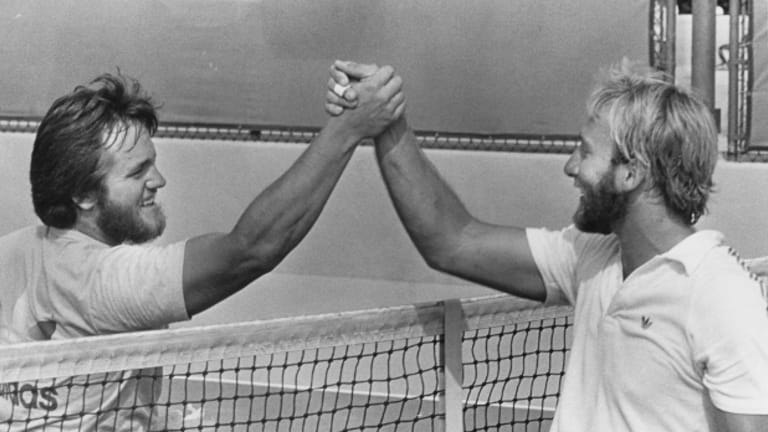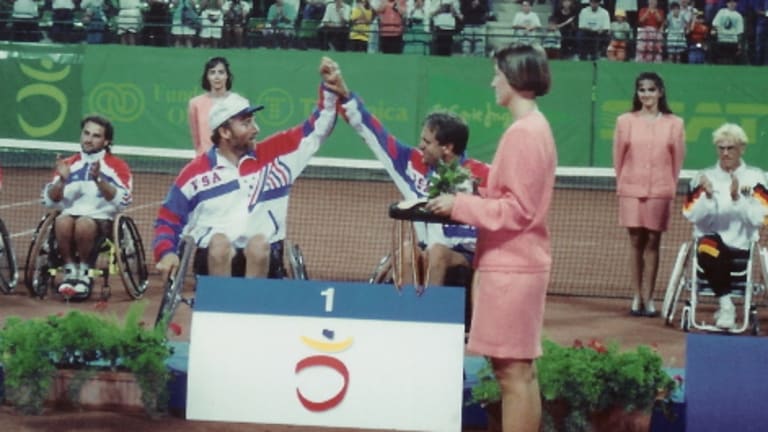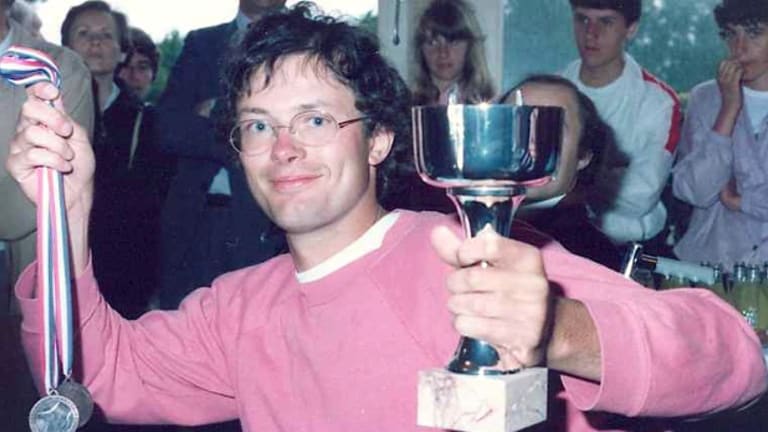In 1976, freestyle skier Brad Parks suffered an accident in competition that left him paralyzed from the waist down. Like many who endure disabling injuries, he played wheelchair basketball as part of his rehab. Then one day, he tried hitting some tennis balls with his father.
From that casual rally, a revolution grew. Today, wheelchair tennis is a global sport that the International Tennis Federation (ITF) estimates is played in 80 to 100 countries. It’s also the rare Paralympic sport in which top players can make a living. The ITF’s UNIQLO Wheelchair Tennis Tour features more than 160 tournaments across 40 countries, including a competition at all four Grand Slams. Top wheelchair tennis players spend roughly half the year globetrotting, and the rest training several hours a day, five or six days a week, just like their able-bodied counterparts.
It is a far cry from the sport’s humble origins, almost 40 years ago, in Southern California. Parks’ speculative interest took a fateful turn when he returned to the Rancho Los Amigos rehabilitation center in Downey, CA, for a reevaluation one month after his discharge. Since his initial stay at Los Amigos, a new recreational therapist, Jeff Minnebraker had taken over. Minnebraker, a paraplegic who had been injured in an automobile accident, had custom-designed his own lightweight, maneuverable wheelchair and had started playing wheelchair tennis himself, incorporating it into life at Los Amigos.
In the annals of wheelchair sport, that chance encounter was the equivalent of John Lennon meeting Paul McCartney or Steve Jobs hooking up with Steve Wozniak—creating an alchemy that changed things forever.
Minnebraker could not be reached for this story, but in the 1976 short film that profiles him, Get It Together, he describes his goal with his customized chair: “I just streamlined it as much as possible and looked at it as more of a sports car that would perform, something that would really function well. I wanted my chair to be something that would turn very, very quick.”
In the opening moments of the film, Minnebraker is seen wheeling and spinning in his chair, at speeds that were unprecedented at the time. Another innovation he made was eliminating push handles from his wheelchair. “They weren’t needed,” Minnebraker says in the film. “Everybody is inbred in society so that wherever you go people want to push you, and I don’t like that. I’m striving to be independent.”
Minnebraker and Parks became friends, and Parks would often visit Minnebraker in his Woodland Hills home. One day, he tried Minnebraker’s customized chair, and Minnebraker sat in his. “His chair didn’t have much of a back, and no armrests. When you saw Jeff in the chair, you only saw Jeff, with wheels,” says Parks. “I looked at him in my chair with the high back and I said ‘God you look so disabled. That must be how I look.’”
“I asked him if he’d make me a chair,” says Parks.
“No,” said Minnebraker. “But I’ll teach you to make your own.” Parks learned and eventually the two men, along with a few other wheelchair tennis players, went into business manufacturing the chairs under the brand name Quadra.


